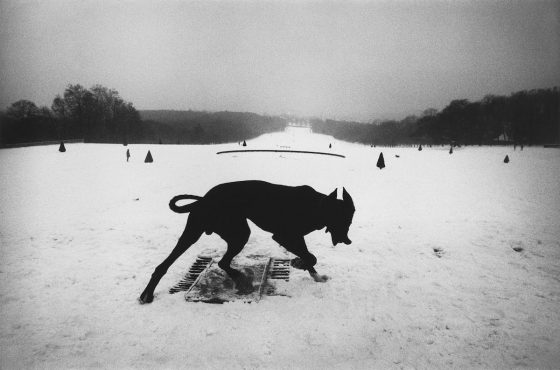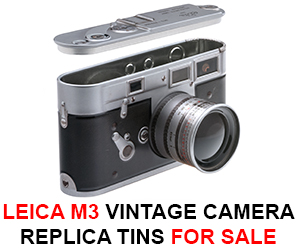For a limited time, fans of renowned photographer Josef Koudelka can view his most personal work on display at the Ernst Leitz Museum in Wetzlar from March 5 to August 23, 2020. The exhibition titled “Exiles and Panoramas” is inclusive of his series “Exiles” as well as panoramas he took throughout the 80s.
The motifs seen throughout the “Exiles” series are reflective of Koudelka’s life throughout the 70s and 80s living a nomadic lifestyle and the revelations this period brought him about humanity. Paying close attention to people and to contemporary history, Koudelka spent decades producing exceptional photographs that show human beings in all their vitality and vulnerability.
Please see the full press release below for further information.
Renowned Photographer Josef Koudelka’s Autobiographical Series “Exiles” and 80s Panoramas on Display at the Ernst Leitz Museum
“Exiles and Panoramas” is a touching display of Koudelka’s years of nomadism contrasted with his personal struggles and revelations about humanity
February X, 2020 – Josef Koudelka is one of the world’s most influential and distinguished photographers in recent decades. His visual language is incomparable, intense and extraordinary. Born in Boskovice (Czech Republic) in 1938, and currently living in Paris and Prague, the photographer’s impressive work will now be presented in a concise solo exhibition titled “Exiles and Panoramas” at the Ernst Leitz Museum in Wetzlar from March 5 to August 23, 2020.
At the heart of the exhibition is the collection of pieces titled “Exiles,” which is one of his most personal and haunting series. The motifs very effectively reflect the photographer’s point of view and reveal his experiences over many years of a nomadic lifestyle. After leaving the Czech Republic in May 1970, a phase of alienation began for Koudelka, and after he had arrived in England, travel continued to determine the rhythm of his life for the next few years. Many of his black and white photographs are defined by strong graphic contrasts, an emphasis on surfaces and shapes, and a compassionate distance. Paying close attention to people and to contemporary history, Koudelka spent decades producing exceptional photographs that show human beings in all their vitality and vulnerability. From the humanistic point of view, the images capture expressive and emotionally touching concepts. Yet, even in his pictures of structures, views or unusual perspectives, the photographer ingrains his works with an enormous, aesthetic power that, despite its simplicity, often appears puzzling.
The exhibition at the Ernst Leitz Museum places the “Exiles” series in contrast to a personal selection of Koudelka’s panoramas, taken as of the mid-eighties. While he had once been entirely dedicated to 35mm photography for his previous work, a panorama camera has since given him the opportunity to discover the world in a new way. With pictures of expansive landscapes and coastal shorelines throughout Europe and the Middle East, he searches for traces of the past in areas that have undergone sometimes devastating changes due to industry, conflict or simply the passage of time. Although these visual worlds appear devoid of any people, they bear witness to human existence in a disturbing yet beguiling way.
Koudelka began taking photographs in the 1960s while he was training as an aeronautical engineer at the Technical University in Prague – initially producing reportages and later working for a theatre magazine. As of 1967, after giving up his work as an engineer, he focused completely on photography. His most famous pictures were taken during the Prague Spring Suppression in August 1968. With direct and immediate images, Koudelka documented the street battles between desperate citizens and Warsaw Troop invaders. His negatives were smuggled out of the country in 1969, and on the anniversary of the invasion, the Magnum Photo Agency distributed the pictures under the authorship of “P.P.”. Published and acknowledged worldwide, the “Photograph Prague” collection remained unidentified until Koudelka moved to London in 1970 and then to Paris in 1980 for his own security.
The pictures taken during that period very specifically reflect his double-edged feelings of alienation and commitment. “I found myself outside Czechoslovakia and decided to do things that I’d been unable to do whilst living there: get to see the world.” Closure for this phase of his life came with the publication of “Exiles.” Though it only first appeared in 1988, the book served as an appraisal as well as a way to come to terms with the past.
With a total of 68 pieces, the exhibition at the Ernst Leitz Museum offers profound insight into Koudelka’s artwork. The collection reflects an exciting dialogue between humanity and fate, liveliness and dead matter, contemporary history and timelessness. For more information, please visit https://ernst-leitz-museum.de/.
About Josef Koudelka
Josef Koudelka was born in Boskovice, CSSR, on January 10, 1938. He studied at the Technical University of Prague from 1956 to 1961, then worked as an aircraft engineer in Prague and Bratislava until 1967. At the same time he produced pictures for a theatre magazine, worked as a reportage photographer, and began to take an interest in the life of the Roma. In August 1968, he photographed the Warsaw Pact troops as they invaded Prague and suppressed the so-called Prague Spring, the democratisation programme being carried out by the Czechoslovak Communist Party under Alexander Dubcek. In 1970, Koudelka was granted asylum in England, and the country became the starting point for his many journeys. He has been a full-time member of the Magnum Photo Agency since 1974. In 1987 he was granted French citizenship. He has received many honours and awards.
Koudelka started working with Leica cameras in particular after joining the renowned Magnum Photo Agency. The photographer was also able to count on Leica later on with the transfer to digital photography: a special panorama camera was made specifically for him based on a Leica S2.

















